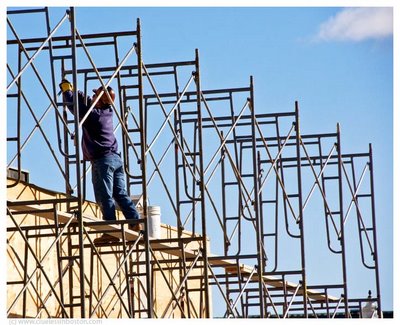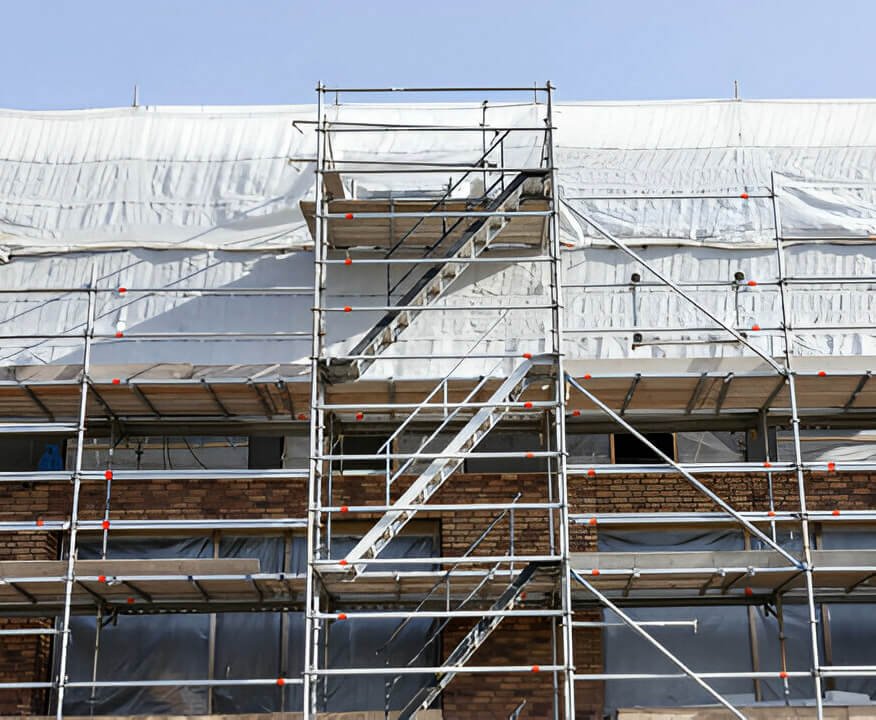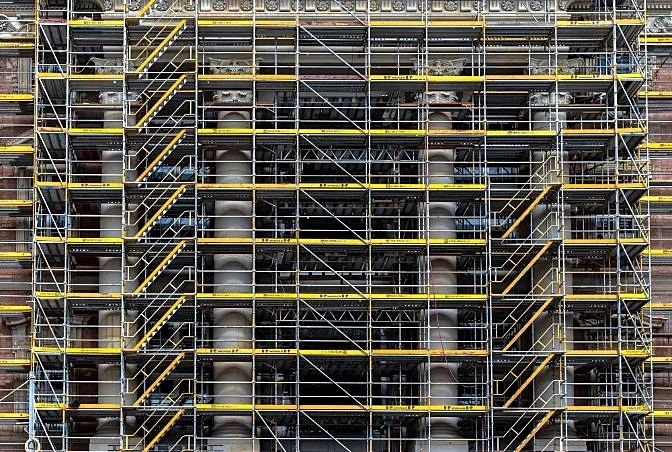Checking Out the Various Sorts Of Scaffolding Made Use Of in Construction Jobs
The building and construction industry depends heavily on different kinds of scaffolding to satisfy details project requirements, each offering unique benefits and applications. Typical frame scaffolding supplies a sturdy structure for basic jobs, while put on hold scaffolding is important for work on high-rise structures.

Standard Framework Scaffolding
Standard framework scaffolding is among the most widely used techniques in the building sector as a result of its robustness and adaptability. This system is composed of upright and horizontal frames that are put together to create a secure system for materials and workers. The main elements include vertical messages, horizontal ledgers, and angled braces, which together supply a strong structure that can support substantial loads.
One of the key benefits of standard framework scaffolding is its adaptability to different construction tasks, ranging from household structures to huge commercial frameworks. The modular style enables simple assembly and disassembly, making it effective for both long-term and temporary tasks. Furthermore, the system can be customized in height and size, accommodating various structure designs and site problems.
Security is paramount in scaffolding applications, and traditional framework systems are equipped with guardrails and toe boards to stop falls and ensure employee defense. Regular examinations and adherence to safety policies are vital in keeping the honesty of the scaffold (Scaffolding). On the whole, conventional framework scaffolding continues to be a basic selection in the construction sector, providing a dependable platform for labor and enhancing general task performance

Suspended Scaffolding
Suspended scaffolding offers a distinct remedy for construction jobs that call for access to raised surfaces, particularly in circumstances where standard frame scaffolding might be not practical. This sort of scaffolding is generally suspended from the roofing system or upper levels of a structure, making use of a system of pulley-blocks, platforms, and ropes to produce a functioning room that can be changed to numerous elevations.
One of the main benefits of suspended scaffolding is its adaptability. It can be conveniently repositioned or decreased to suit modifications in building and construction needs, making it excellent for tasks such as home window installation, façade work, and maintenance on skyscrapers. Furthermore, the very little footprint of put on hold scaffolding enables far better usage of ground area in urban settings, where space is typically minimal.
Security is a crucial factor to consider in the usage of suspended scaffolding. Appropriate rigging and securing systems should be used to ensure stability and protect against accidents. Operators needs to also be learnt the risk-free use this devices. In general, put on hold scaffolding offers a reliable and efficient option for accessing hard-to-reach locations in different building and construction situations, improving both productivity and safety on website.
System Scaffolding
System scaffolding, frequently considered as a modern-day solution in the scaffolding sector, contains pre-engineered parts that can be rapidly assembled and adjusted for numerous building and construction tasks. Scaffolding. This sort of scaffolding is identified by its modular layout, which permits for convenience and effectiveness on work websites, accommodating architectural needs and various elevations
Typically made from high-strength steel or aluminum, system scaffolding provides enhanced sturdiness and stability. The components include upright posts, straight ledgers, and diagonal braces, which adjoin firmly, guaranteeing a durable structure. The design usually includes standardized installations, streamlining assembly and disassembly processes, thereby minimizing labor time and costs.

Rolling Scaffolding
Moving scaffolding is a flexible option to typical set scaffolding, designed for mobility and ease of use on construction websites. This sort of scaffolding is composed of a platform sustained by frameworks with wheels, permitting employees to quickly transfer it as needed. The movement attribute significantly boosts productivity, as it reduces downtime associated with disassembling and constructing dealt with scaffolding.
Normally built from lightweight materials such as light weight aluminum or steel, rolling scaffolding supplies a strong yet portable solution for tasks requiring frequent repositioning - Scaffolding. It is especially beneficial in tasks such as paint, drywall setup, and electric work, where access to various elevations and areas is essential
Safety is vital in rolling scaffolding style, with features such as securing wheels to protect against unintended movement when being used, and guardrails to secure workers from falls. Additionally, lots of designs are flexible in height, fitting numerous project needs.
Cantilever Scaffolding

The design scaffolding jha of cantilever scaffolding typically includes using brackets or arms anchored to a structure or framework, enabling the system to extend external safely. Security is vital; therefore, these scaffolds have to be crafted to withstand environmental problems and numerous tons. Routine examination and maintenance are important to make sure structural honesty and worker security.
Cantilever scaffolding is preferred for its convenience and effective use area, making it a popular choice in metropolitan atmospheres where area constraints prevail. It you can look here facilitates less complicated accessibility to high elevations, ultimately adding to the overall performance of building and construction jobs. Just like all scaffolding types, appropriate training and adherence to security standards are critical for employees making use of cantilever scaffolding.
Conclusion
In final thought, the varied kinds of scaffolding used in construction projects each offer distinctive functions tailored to particular site requirements. Traditional framework scaffolding provides stability, while suspended scaffolding offers adaptability for raised tasks. System scaffolding facilitates quick setting up, and rolling scaffolding improves movement for varying workplace. Cantilever scaffolding efficiently resolves barriers in urban setups. Understanding these scaffolding kinds is important for enhancing security and efficiency in building, eventually adding to the effective completion of tasks.
Traditional frame scaffolding gives a tough foundation for basic tasks, while suspended scaffolding is necessary for work on skyscraper frameworks.Moving scaffolding is a functional choice to typical set scaffolding, designed for mobility and simplicity of use on building and construction sites. As with all scaffolding types, correct training and adherence to safety find more info requirements are crucial for employees making use of cantilever scaffolding.
Typical framework scaffolding gives security, while suspended scaffolding supplies flexibility for raised tasks. System scaffolding facilitates fast setting up, and rolling scaffolding improves flexibility for differing job environments.